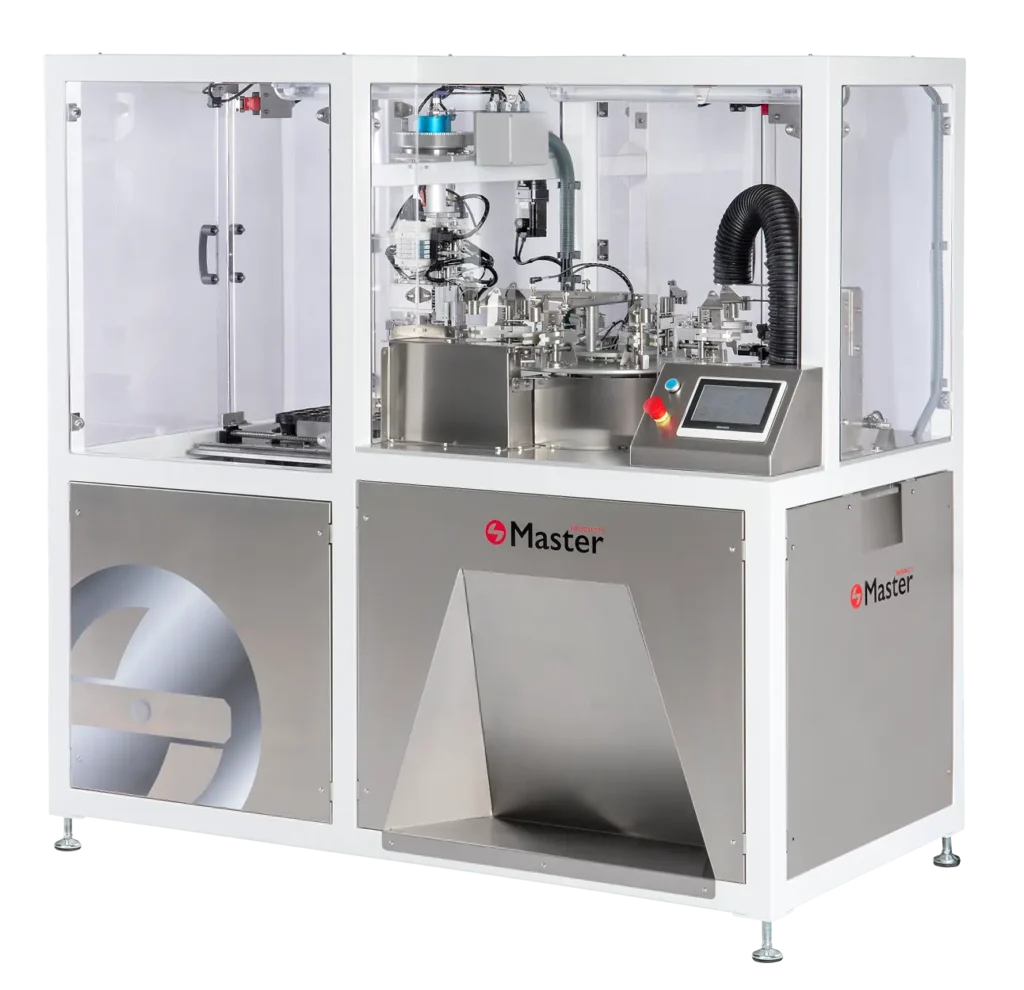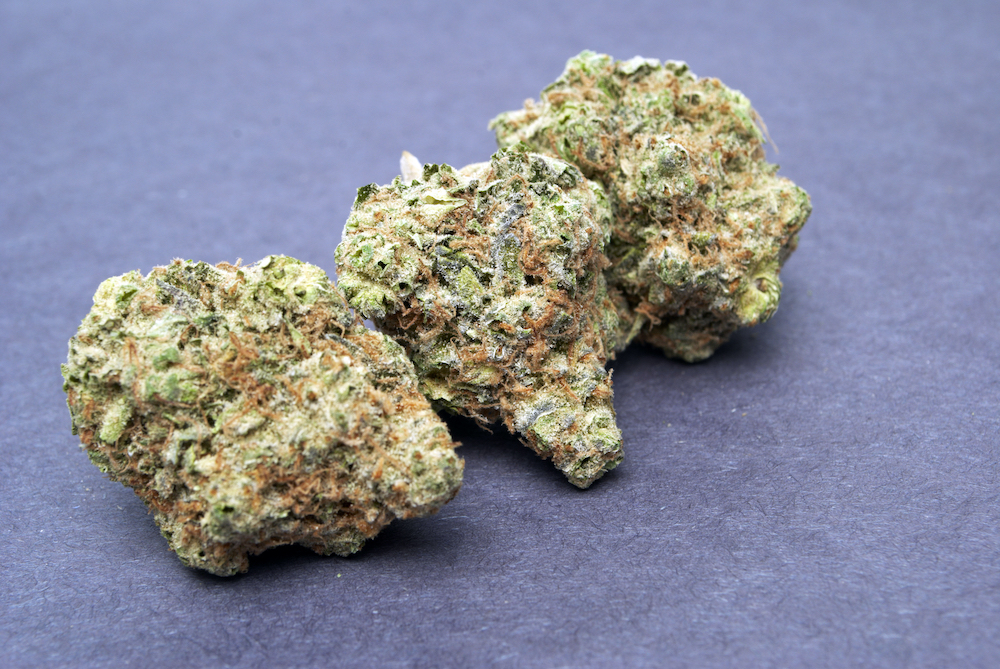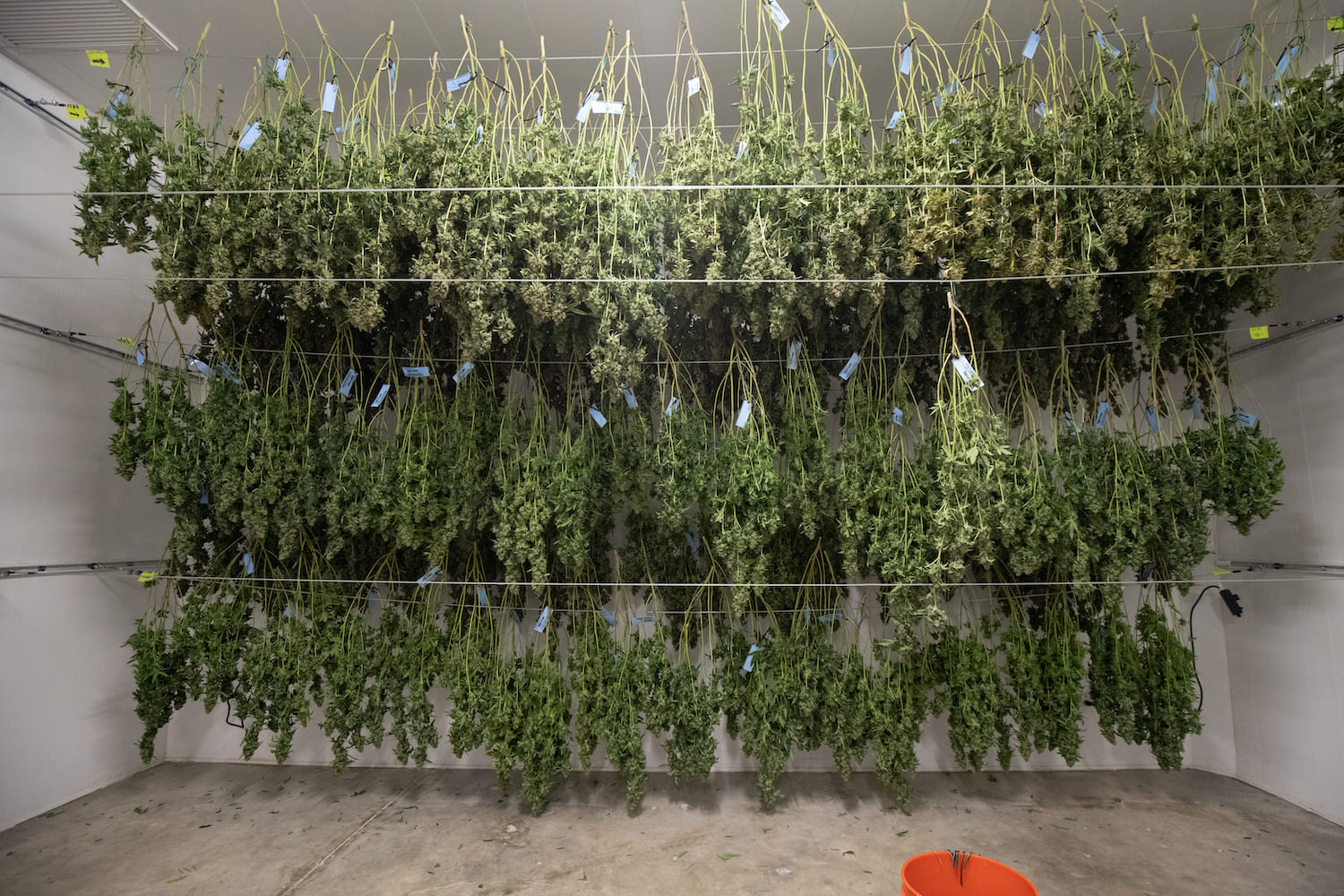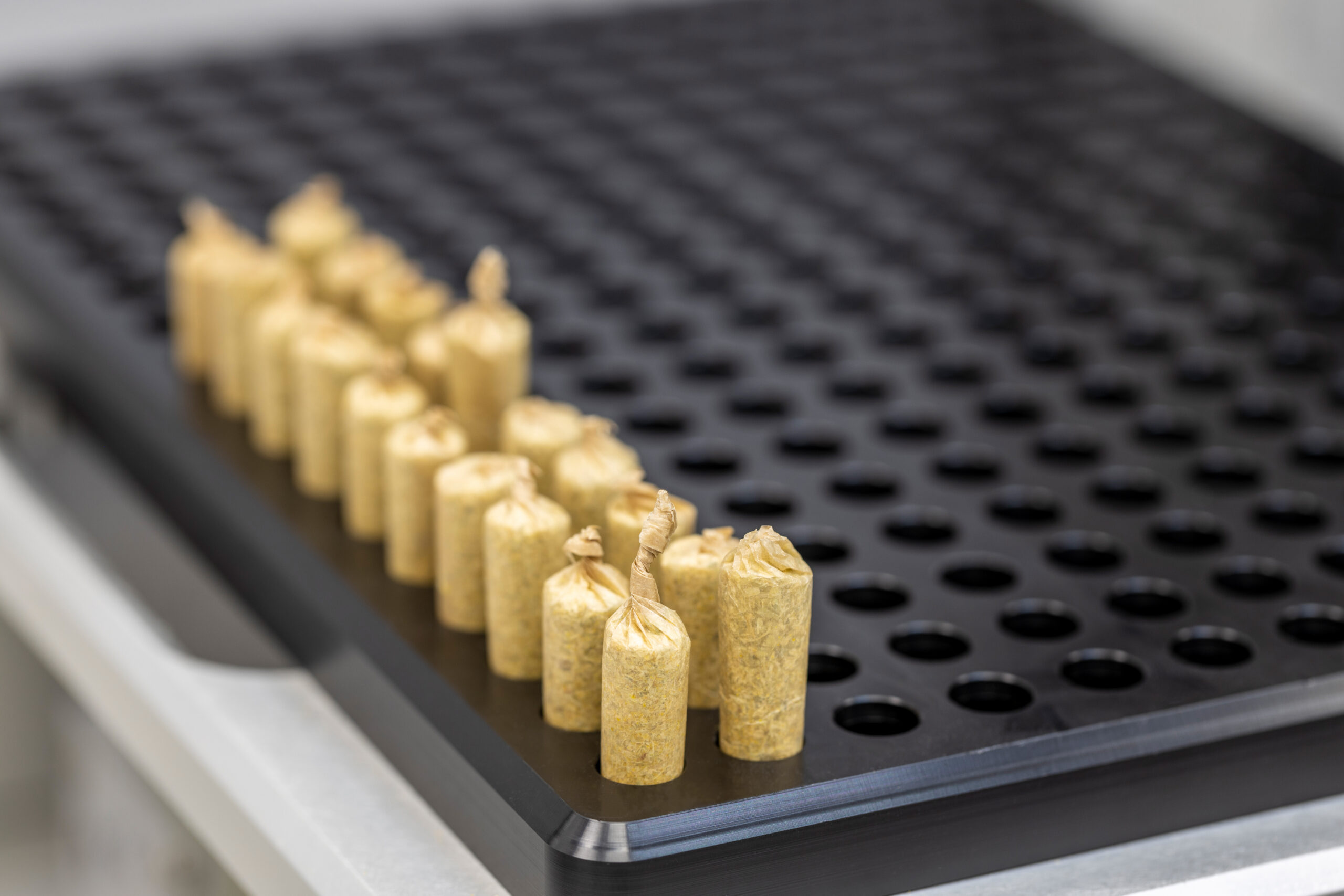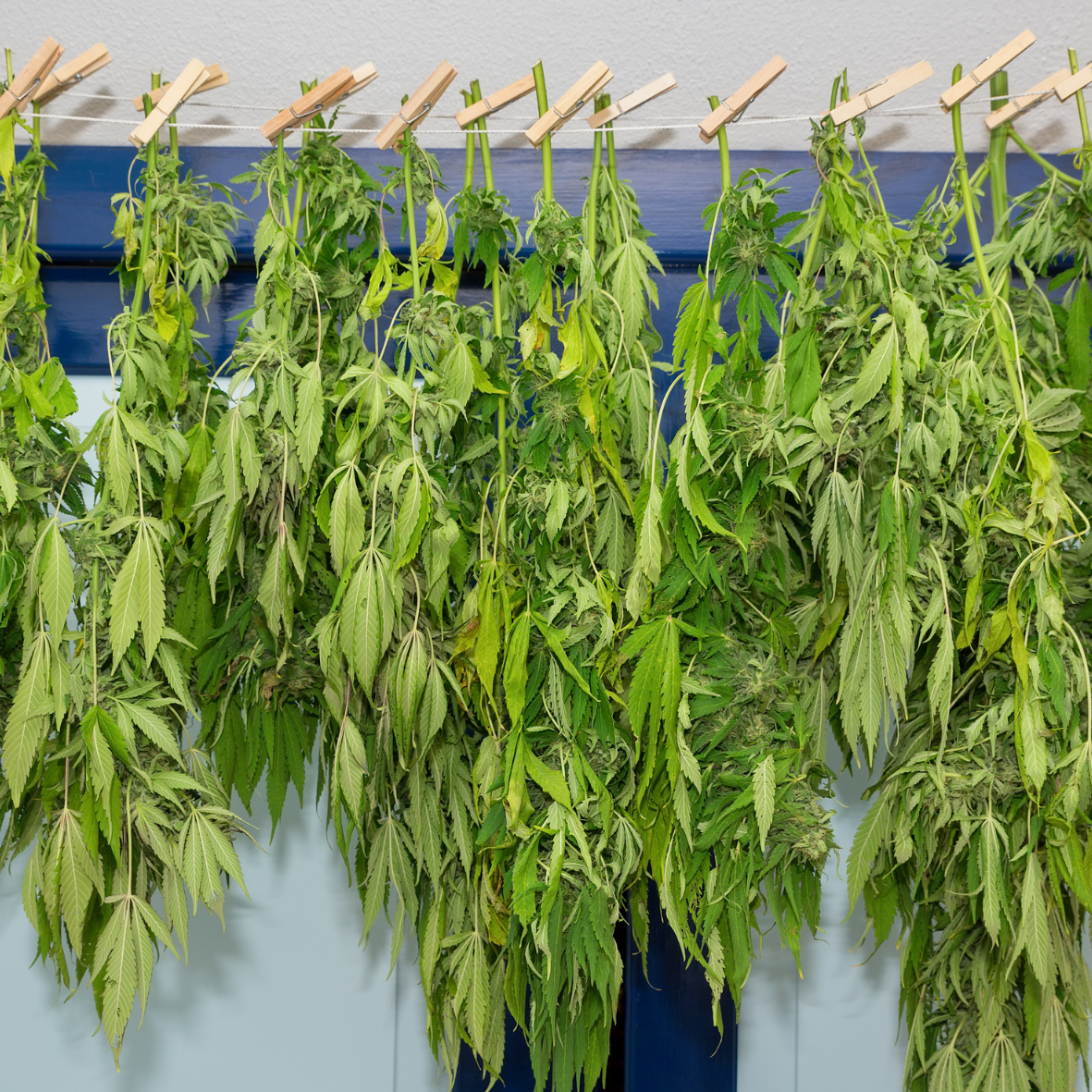Which process should I choose?
The art of cultivating cannabis goes beyond merely planting seeds and watching them grow; it involves a series of meticulous steps to ensure the production of high-quality plants, with special focus on flowers, as they are the most sensitive part of cannabis production, specifically when they are intended for medicinal use.
All efforts invested on the postharvest process will be reflected in the final production, with negative effects if we do not do it in the right way. Therefore, choosing the best way to process and trim the cannabis plant will be the key to our final production success.
There are two main methods employed by cultivators to achieve this: wet trimming cannabis and dry trimming cannabis. Each approach comes with its set of advantages and disadvantages, depending largely on factors such as harvest planning and cannabis genetics. It is crucial to take both pros and cons into consideration, learn about them and, depending on growers/users, choose the one that best suits their needs.
In this article, we’ll delve deep into the nuances of both methods, evaluating their merits and limitations to help you decide which is the best option for you.
Basics of trimming in cannabis cultivation
Trimming cannabis flowers is an essential step for both consumers and cultivators. It is recommended to follow, strictly, all steps of this stage in order to achieve the desired result, specifically on cannabis flowers. At first step, it is essential to remove all branches and leaves before starting the trimming as itself, as it will allow to trim the flowers in better conditions. The perfect solution to do so, automatically, is by using a bucker machine. If require, you can have a look at our Professional Cannabis Buckers. After this process is done, it is time to start with the chosen process.
Wet trimming process
One debate that consistently emerges is the optimal method of bud trimming. Understanding these two distinct approaches—wet trimming and dry trimming—can significantly influence the quality, efficiency, and profitability of your cannabis operations.
What is wet trimming?
Wet trimming refers to the method where cannabis flowers are trimmed immediately after harvesting, before they have had a chance to dry. The process involves cutting branches containing buds into medium sizes and transporting them to the trimming area.
The larger leaves, commonly called “fan leaves”, are removed firstly, followed by the smaller ones, called “sugar leaves”. Wet trimming cannabis is a time-sensitive operation and demands prompt attention to detail.
Advantages of wet trimming:
- Easier trimming
The most significant benefit of wet trimming is that it makes the process more straightforward. When the leaves are fresh and wet, they stand perpendicular to the buds, making them easier to see and remove. This often speeds up the trimming process.
- Reduced risk of mold
Mold thrives in moist conditions. Wet trimming helps mitigate the risk of mould by removing moisture-retaining leaves before drying, creating a more controlled drying environment.
- Requires less space for drying
Wet trimmed cannabis flowers take up less space compared to dry flowers, offering an economical solution for those growers with limited drying space. In terms of machinery to automate the process, it is also a benefit, as it takes up less equipment.
Best cannabis wet trimmers:
When it comes to wet trimming, you can have a look at our tumbler trimmers family. They have a special barrel designed to trim wet. Its innovative cutting technology helps flowers from getting damage, preserving all their physical and chemical properties. The MT Tumbler 200 PRO, for instance, stands out as one of the best wet trimmers on the market. It’s efficient, user-friendly, and designed to handle the unique requirements of wet trimming. Other available options, for larger scale productions, include the MT Tumbler 500 and MT Tumbler 800, each one of them offering varying capacities and functionalities.
Disadvantages of wet trimming:
Wet trimming does come with some downsides. It requires high processing capacity, meaning you need to have adequate manpower and equipment at the ready. Additionally, because of the urgency involved, there’s less room for error, which it might be quite stressful to manage due to the urgency of getting flowers trimmed before they get dried, as we can not save the production in batches. Humidity and time conditions may affect a lot flowers, as well as time to process, as flowers can be damaged if we do not trim in the correct moment. You can have a look at our published article “Outdoor crop harvest approaching: what do I need?”, where we explain best tips to have the optimal time for harvesting.
Dry trimming process
Transitioning from wet to dry trimming, it’s crucial to understand that both methods have their merits and downsides. The following section will delve into the specifics of dry trimming, helping you decide which method better suits your cultivation needs.
What is dry trimming?
In contrast to wet trimming, dry trimming involves allowing the harvested buds to dry before the actual trimming occurs.
After harvest, the branches with buds are dried for a specific duration before the larger leaves are carefully removed. Dry trimming cannabis is a less urgent process and can be spaced out over time. As mentioned above, we can’t harvest and process the plant when desired. Humidity has a major effect on the structure of the flowers. Ideally, flowers should be crisp on the outside and just the right amount of moisture on the inside. Also, some cannabis varieties lend themselves better to dry trimming than others. Being aware of your flowers’ characteristics can also help you decide which trimming process suits you best.
Advantages of dry trimming:
- High-quality flowers
A notable advantage of dry trimming is that it often results in higher quality buds. We can get excellent results from trimming dry, but… be careful! If we do it the wrong way, we can also get the worst results ever! We need to be aware of how to process correctly, otherwise, we can even destroy the whole crop, especially if the flowers are too dry. The slower drying process allows for a softer texture and better flavour in the finished product.
- Flexibility in timing
Since the cannabis flowers are already dried, there’s less pressure to trim them immediately, providing growers flexibility in their schedules, as productions will be scheduled in different batches.
- Requires less equipment
Compared to wet trimming, dry trimming typically requires fewer resources, making it a more cost-effective method for some.
Disadvantages of dry trimming:
As described before, you can also have a look at our dry trimmers’ family. All of them have been engineered to trim dry, achieving optimal results. The MT Dry 200 is, currently, considered best dry trimmer on the market. Silent and portable, it provides a precis and clean cut, while ensuring the integrity of flowers. Other models, like MT Dry 500 and MT Dry 800 also offer reliable dry trimming solutions, ideal for larger-scale growers.
COMPARATIVE TABLE
In cannabis postharvest processes, the debate as to whether dry or wet trimming is best continues to be a hot topic. Wet trimming is usually considered easier and quicker, but dry trimming often results in higher quality cannabis flowers, if the process is carried out under optimal conditions.

Factors to consider for choosing a method
When planning your cannabis postharvest process, several factors like harvest planning, cannabis genetics, and plant structure come into play.
Wet trimming may be advantageous for certain cannabis flowers, especially those susceptible to mould, as it allows for immediate trimming and reduces moisture. Therefore, it is very important to know the variety of cannabis flower to be harvested. Dry trimming may be more suitable for plants with robust structures that can withstand the drying period without losing quality.
When considering which option to choose, it is very important to ask yourself the following questions:
- Will the harvest be progressive?
- How much production do we have to trim?
- Do we have the enough space for postharvesting?
- What machinery do we need?
Having clear answers can help you choose the best method. And if you are still in doubt, you can always contact our team at [email protected]. We offer a wide range of cannabis postharvest solutions for both wet and dry trimming, depending on your needs. Just ask us, we’ll be happy to assist you!
Conclusion
Both wet and dry trimming methods offer their own sets of benefits and downsides. The best option depends on various factors like the structure of your cannabis flowers and your cultivation operation’s specific needs.
Understanding your specific requirements is key. Whether it’s the best dry trimmer or the best wet trimmer, choosing the right equipment can make all the difference to the quality and efficiency of your operation.
Thank you, #mastercommunity, for reading us!

